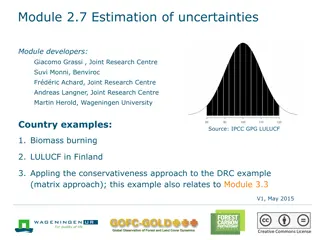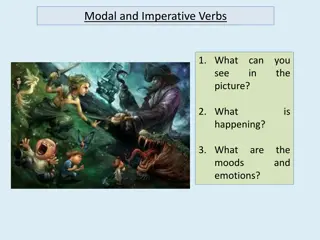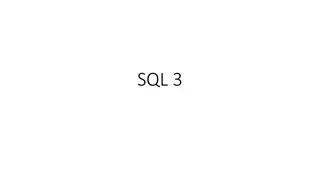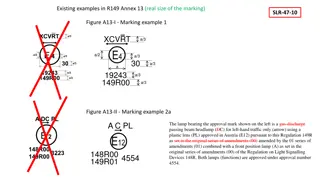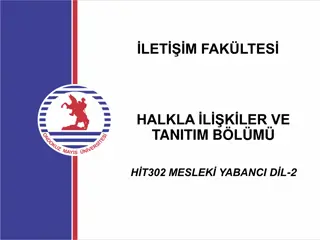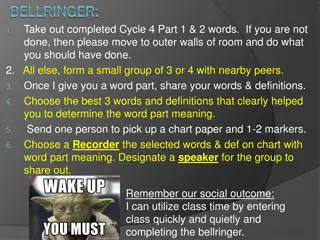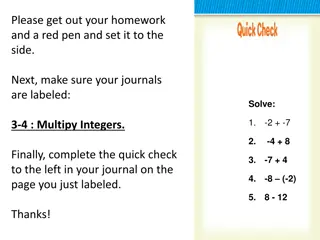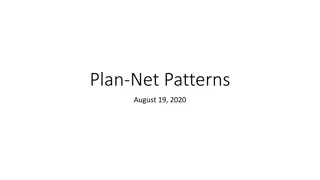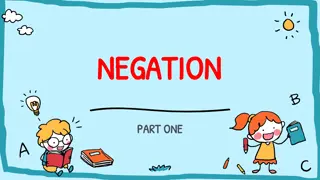
Real-World Process Improvement Project Summaries
"Explore real-world examples of process improvement projects in industrial and administrative settings. Learn how issues were identified, root causes determined, and recommendations implemented for tangible results."
Download Presentation

Please find below an Image/Link to download the presentation.
The content on the website is provided AS IS for your information and personal use only. It may not be sold, licensed, or shared on other websites without obtaining consent from the author. If you encounter any issues during the download, it is possible that the publisher has removed the file from their server.
You are allowed to download the files provided on this website for personal or commercial use, subject to the condition that they are used lawfully. All files are the property of their respective owners.
The content on the website is provided AS IS for your information and personal use only. It may not be sold, licensed, or shared on other websites without obtaining consent from the author.
E N D
Presentation Transcript
Real-World Examples PROCESS IMPROVEMENT PROJECT SUMMARIES
Industrial Examples Industrial Examples Vehicle Maintenance Problemtoaddress: (from team charter) Time for vehicles to complete all phases of maintenance needs to be reduced. It is unclear which phase is causing the greatest delay. Delay is affecting vehicle owners. Communication with owners Mechanic availability Parts lead time Training and knowledge Unclear priority communication for parts Unclear communication for equipment Lack of training Inefficient quality control procedures Revised process and layout Training for new process Mechanics used primarily for mechanic work, other duties dispersed among non-mechanics Consolidated Quality Control Standard review and signatures for orders Manuals made readily available at key locations Average maintenance cycle time per vehicle reduced by 35% Average number of mechanic hours per vehicle reduced by 68% Issues identified during project: Rootcauses: Recommendations: Results:
Industrial Examples Industrial Examples Warehouse Management Problemtoaddress: (from teamcharter) Warehouse spaces were recently reorganized. New procedures are notclear. Without formal methods to train incoming personnel, efficiencies gained by new layout may be lost resulting in return to less efficient operations and/or rework to achieve current results. Conflicting guidance Word-of-mouth training Several personnel providing training Lack of clear understanding of guiding documents and location of critical information Training authority not clearly identified New procedures not documented Critical reference material spread across multiple documents Documented process and layout Training for new process Working binder established with standard content: Introduction, Forms, Standard Procedures w/ Pictures, List of Tools, Screen Shots, List of References, Inspection Checklists Binders made readily available at key locations Training/Cross-Training at standard frequency All personnel cross-trained to serve as back-up for secondary positions Average supply request response time reduced and holding steady at X minutes Issues identifiedduring project: Root causes: Recommendations: Results:
Industrial Examples Industrial Examples Inspections Problemtoaddress: (from team charter) Current inspection process has variation in inspection methods, scoring methods, inspector involvement, and cycle time. Cycle times range from X to Y days. Structure of inspection teams No dedicated inspectors Outdated guidance Inefficient order of inspections Traditional assignments Varying interpretations of requirements Lack of training Piecemeal development of inspection procedures Standardized procedures and order of inspections Inspector training Database with automated scoring Dedicated inspectors Average inspection cycle time per organization reduced by 50% Standardized scoring Increased time available for training in low scoring areas Web-based database containing inspection results Issues identified during project: Rootcauses: Recommendations: Results:
Administrative Examples Administrative Examples Check In and Check Out Process for Arriving and Departing Personnel Problemtoaddress: (from team charter) It is currently taking X days for personnel to check in and out of the organization during arrival and departure. A check sheet does exist to serve as a guide, but itincludes unnecessary requirementsand the orderisnot logical. Non-essential requirements on check sheet Order of sheet doesn t align with locations Check sheets don t provide any office contact information or hours of operation Records and documentation requirements are unclear Procedures developed over time, by adding stops to existing list Unclear priorities from leadership No standardized method across all organizations Lack of communication across organizations Revised process, reduced requirements, adjusted order of requirements Provided map, points of contact, and available office hours on check list Forwarded procedures to leadership for replication consideration Issues identified during project: Rootcauses: Recommendations: Reduced number of process steps from 16 to 9 Average check in cycle time reduced by 67% Average check out cycle time reduced by 40% Results:
Administrative Examples Administrative Examples Manning Support Process Problemtoaddress: (from team charter) Manpower support requests constantly arrive from various sources with missing or incorrect information. This results in last minute changes, incorrect responses, and possiblyaffectscareeropportunitiesforpersonnel. Critical information missing Exaggerated or incorrect priorities Timeliness of requests Duplicate requests No standard process Requests accepted by multiple offices with varying information requirements Lack of training No communication of information requirements No status updates Standard format for requests Single entry point into process Missing information addressed upon receipt Point of contacts identified and distributed Criteria established for prioritization Reduced error rate of request documentation to < 5% Average response time reduced by 40% Issues identified during project: Rootcauses: Recommendations: Results:
Administrative Examples Administrative Examples Body Composition Program for Maintaining Height and Weight Standards Problemtoaddress: (from teamcharter) It currently takes X months to process personnel into the official Body Composition Program when height and weight standards are not met. This results in re-work due to expiring lab tests and affects time to return personnel to within standards. Competing priorities Varying documentation requirements by organizations Forms and information files not standardized Expiring lab work No standard physical or nutritional guidelines No pre-requisites or training for coordinators Guidance is not specific No standard formats for documentation Nutritional guidance is not officially addressed Responsibilities/ authority unclear Revised process Detailed guidance published Training for new process Standard folder format with sample content Coordinated physical and nutritional training Specific authority designated Training for coordinators developed and provided within X days of assignment Reduced processing time by 60% Reduced rework due to expiring lab work to 0 Issues identifiedduring project: Root causes: Recommendations: Results:
Logistics Examples Logistics Examples Field Operations Setup Problem to address: (from team charter) Issues identifiedduring project: Time to setup for field operations takes X hours. This requires a quantity of Y personnel to be engaged for Z% of the work day. Procedures vary each time Lacking accountability Unclear assignments of responsibility Vehicles not in order of required activity People are untrained No standard methods Personnel are always different No written policy No centralized control Standard procedures with positions and responsibilities documented Training for new process Consistent personnel and driver assignments Turnover training for incoming personnel Average setup time reduced by 41% Amount of re-work reduced by 66% Root causes: Recommendations: Results:
Logistics Examples Logistics Examples Issuance of Gear Problemtoaddress: (from team charter) Issues identified during project: Issuance of gear is chaotic, the space used is cluttered. receivesincorrect sizesof gear. Inventory unknown, can t verify Rushed and last minute Missing documentation No standard, scheduled procedures No standard procedures or timeline Unclear requirements and sizing No standard locations or storage for gear Personnel changeover between order and receipt (different sizes) Documented procedures and space layout Training for new process Current personnel log with gear and sizing identified, updated during check-in process Inventory maintained and verified Standard timeline for ordering and issuance Distribution organized by kits Average time to issue reduced by X days Accuracy of issued gear sizes improved by 40% X% of personnel Rootcauses: Recommendations: Results:
Logistics Examples Logistics Examples Procurement of Parts Problemtoaddress: (from team charter) Issues identified during project: Too much time is lost between when the need for a part is identified, and the order isactually placed. Too many authorizations arerequired to place an order. Too many approvals required by internal policy Priorities are incorrect or not adhered to Trust and confidence in staff Funds held by single person, causing bottleneck Senior staff has authority to approve purchase, but still must wait on finance signature Unclear ownership of funds Internal policy restrictions Paper-based system, and signature authorities are located in different areas on the base Designate single approval authority with visibility of funds Provide copies to finance to verify status of funds (no longer awaiting approval) Revised internal policy Electronic documentation Training for new process Reduced number of process steps from 57 to 9 Average process cycle time reduced by 90% Rootcauses: Recommendations: Results:
Insights Insights Variety of processes Common issues, root causes, recommendations, results Communication Training Varying processes Missing info Common solutions Revised process and written procedures Training Everything we do is a process. Lean tools can help any process. If nothing else map your CURRENT process(es) solutions will be OBVIOUS




